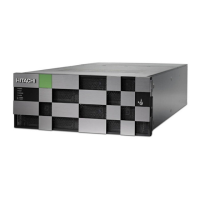3
SMU user authentication
When an SMU user administrator attempts to log in, the user ID/password
combination is sent to the SMU for authentication. For the SMU,
authentication means testing the user ID and password pair, to see if the
supplied password matches the stored password for the supplied user ID.
Depending on the SMU configuration and the supplied user ID, the SMU may
authenticate the user itself (locally), it may authenticate the user through a
RADIUS server, or it may authenticate the user through Active Directory.
After authorization, the SMU allows the user to perform actions allowed by
the user's profile.
Active Directory users are assigned full access rights to the SMU functionality.
For local and RADIUS users the user profile details are specified when the
user account is created.
The user profile:
• Indicates if the user is to be authenticated locally,or through a RADIUS
server.
• Specifies the user's access (privilege) level, meaning it specifies if the user
is a:
○ Global administrator.
○ Storage administrator.
○ Server administrator.
○ Server+Storage administrator.
• Specifies the servers the user is allowed to access.
• Specifies if the user has CLI access (for RADIUS and Local Users).
□
Active Directory user authentication
□
Using Transport Layer Security (TLS) with Active Directory authentication
□
Configuring Active Directory servers
□
Configuring Active Directory groups
SMU user authentication 27
Storage System User Administration Guide for Hitachi NAS Platform and VSP Gx00 and Fx00 with NAS Modules

